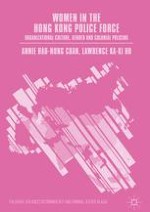This book examines the development of women in the Hong Kong Police Force (HKP) over the past 68 years, beginning from the early colonial years when calls to include women in law enforcement first emerged, to the recruitment of the first female sub-inspector in 1949, and through to the current situation where policewomen constitute 15% of the total HKP establishment. What accounts for these developments and what do they tell us about organisational culture, gender and colonial policing? This interdisciplinary work is relevant to fields including women’s studies, gender studies, policing studies, criminology, colonial history, sociology, and organisational studies, and will appeal to academics, students and lay readers interested in the development of women in policing.
